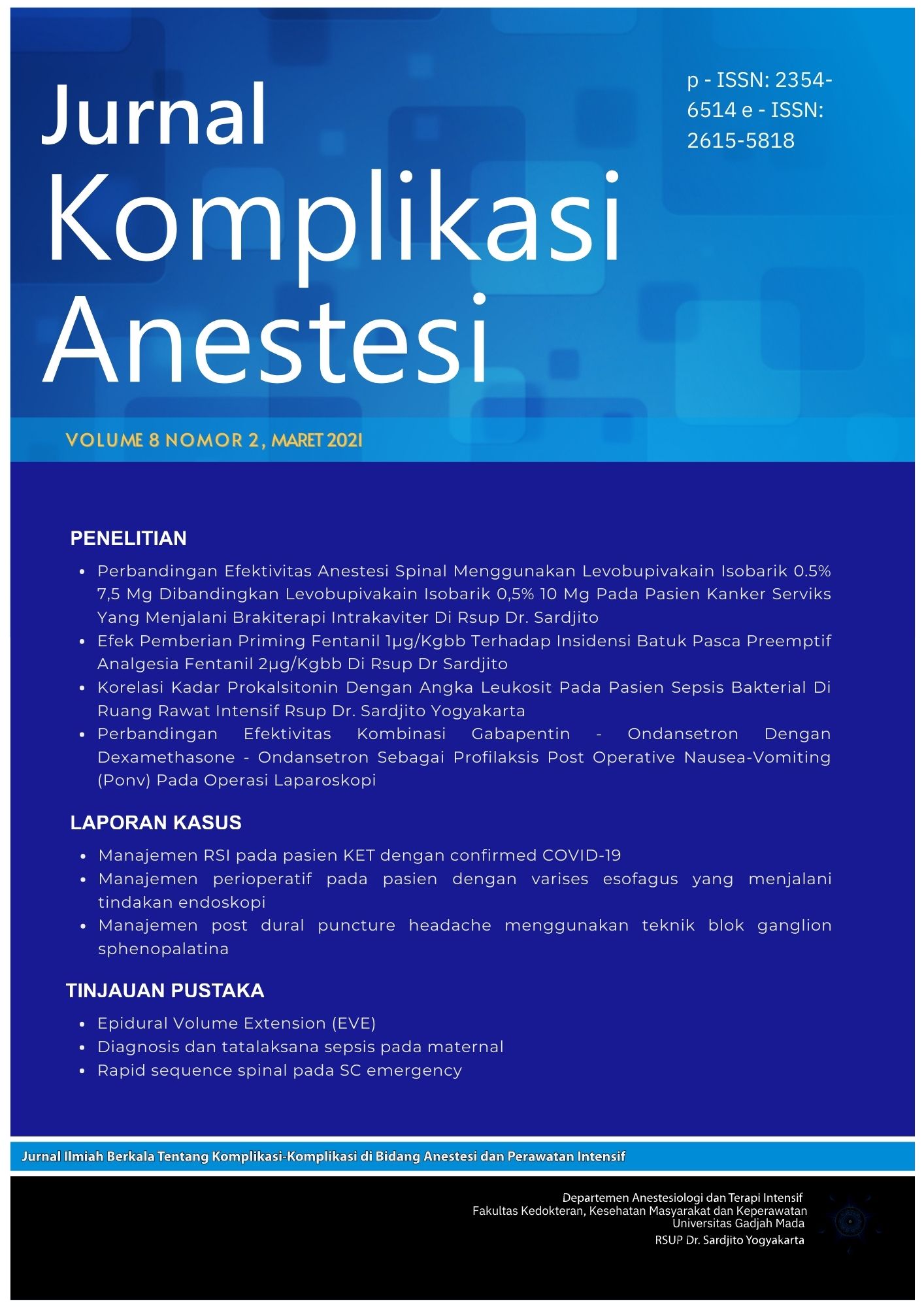Perbandingan Efektivitas Anestesi Spinal Menggunakan Levobupivakain Isobarik 0,5% 7,5 Mg Dibandingkan Levobupivakain Isobarik 0,5% 10 Mg pada Pasien Kanker Serviks yang Menjalani Brakiterapi Intrakaviter di RSUP Dr. Sardjito
Abstract
Background: Levobupivacaine is an S-enantiomer of bupivacaine, has a similar effect but less cardiotoxic than bupivacaine. The aim of this study was to evaluate the effectiveness of 7,5 mg levobupivacaine compared with 10 mg levobupivacaine in terms of sensory block, motor, recovery, and the incidence of hypotension in intracavitary brachytherapy.
Methods: A prospective, randomized, single-blinded study with inclusion criteria: ASA I-II, 140-165 cm of height, 18-65 years, BMI <30 kg/m2. One hundred fifteen samples were randomized and divided into 2 groups: 0,5% isobaric levobupivacaine 7,5 mg and 10 mg.
Results: In both groups, there were no significant differences for sensory block height reaching T10 and the incidence of hypotension (p> 0.05), there were significant differences for the onset, the duration of sensory block, bromage score, and recovery time (p <0.005). The 7,5 mg levobupivacaine group and 10 mg levobupivacaine group had 18±16 minutes and 15±20 minutes for sensory blockonset (p=0,009) in which it was not clinically significant. The 7,5 mg levobupivacaine group and 10 mg levobupivacaine group had 128±26 minutes and 152±39 minutes for sensory block duration (p=0,005), both groups sensory block duration was sufficient for brachytherapy (97±39 minutes). The 7,5 mg levobupivacaine group and 10 mg levobupivacaine group had 107±28 minutes dan 148±24 minutes for recovery (p=0,000). Both groups had no hypotension. Clinically, intracavitary brachytherapy worked well with sensory block heights <T10 and bromage scores <2.
Conclusion: Spinal anesthesia with levobupivacaine 7.5 mg group was as effective as10 mg levobupivacaine group for cervical cancer patients who underwent intracavitary brachytherapy.
Copyright (c) 2021 Hajar Rafika Rani, Bhirowo Yudo Pratomo, Juni Kurniawaty

This work is licensed under a Creative Commons Attribution-NonCommercial-ShareAlike 4.0 International License.
The Contributor and the company/institution agree that all copies of the Final Published
Version or any part thereof distributed or posted by them in print or electronic format as permitted herein will include the notice of copyright as stipulated in the Journal and a full citation to the Journal.

















